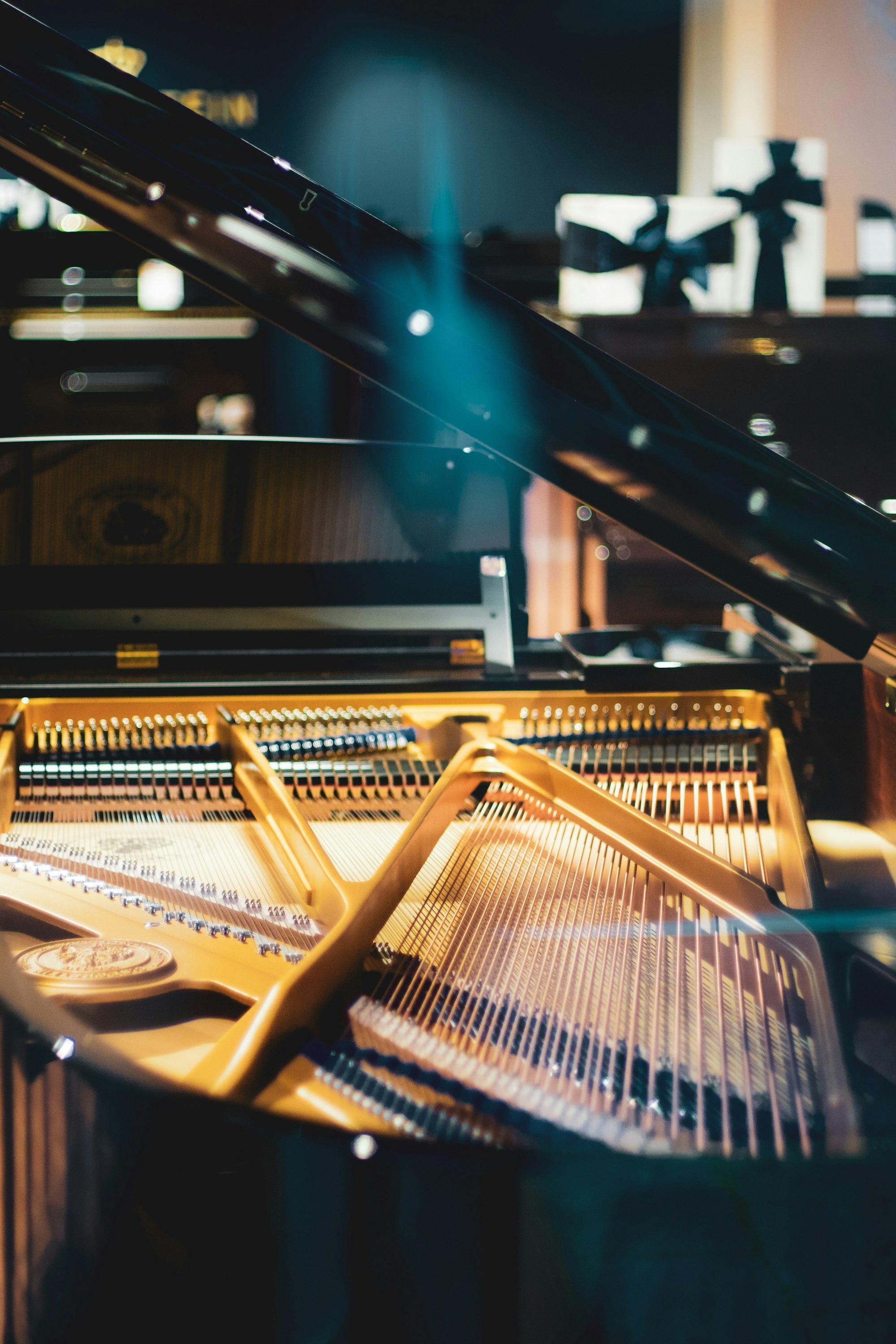How The Piano Works: A Keypress Translated into Sound
Have you ever wondered how pianos work?
How does pushing a key translate into sound, and why do different pianos sound so different from each other?
It's easy to see inside of a grand piano, and probably most of us have looked inside once or twice. But you can also look inside your upright or console piano as well, by opening the top.

Piano Science: How Pianos Work
The most obvious parts of the piano that you can easily see are the frame and the strings. The keyboard is kind of a string-percussion instrument: the sound is made by hammers striking the strings.

The piano frame (or plate) is made of cast iron. It depends on this strength to hold all of the tension and force exerted by all the piano strings.
If you've ever held a guitar you know the neck has to be strong to hold the tension in those six small strings. Well, 6 strings on a piano are only 2 upper-register keys!
There are around 200 strings on a piano. The higher notes (treble) have up to 3 strings, while the lowest bass notes have only one.
If all the notes only had one string each, the lower notes would be much louder than the higher notes, so the multiple strings help balance the sound.
The pressure of all those strings in an average piano is 18 tons! No wonder the frame has to be made of cast iron.
Treble piano strings are steel, like a steel-string guitar. Bass piano strings are steel wrapped in copper wire, and the strings for the lowest notes are more like thin ropes than strings!
The strings are wound around pins to attain the tension needed to sound a particular tone. The pins are mounted in the pinblock, which is a strong piece of wood attached to the frame.
How Pianos Work: The Sound
Think about strumming an acoustic guitar. It doesn't get very loud, does it? So how does a piano sound so loud, since it's a string instrument too?
The answer is the piano soundboard. Think of it as a sort of acoustic "speaker." The soundboard is a large piece of wood, less than half an inch thick, which works together with the bridge to take the vibrations of the strings and amplify the sound. The soundboard bows slightly toward the strings, so the wood, usually spruce, has to be strong and flexible.

The piano strings lay over the bridge (actually a treble bridge and a bass bridge), which holds the strings up off of the soundboard and also transmits the vibrations. The bridges are made of strong wood, as well, to handle the pressure of those tightened strings.
The piano pedals allow different changes to the sound. The one you might be most familiar with is the sustain pedal, which allows notes to sustain even after you've released the key.

The una corda (soft) pedal softens the sound, and the sostenuto pedal allows you to sustain only certain notes.
How Pianos Work: Pressing a Key
A piano's action is the complex system of parts inside the piano, which allows you to press a piano key and hear sound. This amazing set of mechanics allows you to play soft, or loud, hold the key down for a sustained note, or play a quick, sharp staccato.
Every piece in the puzzle needs to work together precisely in order for the piano to have a responsive touch and a good dynamic range.
A piano action is made up of many parts. Each part needs to be precisely adjusted. When each part of the action is precisely adjusted, the piano will be in tune.
A piano action is made up of these parts: the key, the whippen, the jack, the hammer, and the damper.
1. The key is what you press on the piano.
2. The whippen is a mechanical lever that is connected to the key. When you press the key, the whippen moves down, which pushes the jack down.
3. The jack is a small lever that moves the hammer.
4. The hammer is what hits the piano's strings.
5. The damper is what holds the piano's string from ringing after the hammer hits the string. The damper rises off the string when the key is pressed, and falls back on the string when the key is released.
The action of a piano is actually two actions, one for each half of the keyboard.
Each half of the keyboard has 88 keys, which means there are 88 keys, 88 whippens, 88 jacks and 88 hammers. Each piano also has 88 dampers. Every single one of these parts needs to be adjusted and regulated to work properly, and that's how we tune a piano.
For an excellent illustration of the mechanism from key to string, watch this animation:
How a Piano Works - Animation
Regulation is what we call the adjustment of all of the parts of the piano action to work together precisely. If the parts of the action are perfectly adjusted, the piano will have a responsive touch and a good dynamic range, which means you can play soft, or loud, hold the key down for a sustained note, or play a quick, sharp staccato.
You might have had your piano tuner tell you your piano needs to be regulated if it's been a long time since it's been tuned or played.
You might need regulation simply from wear, as well, since there are cloth parts that change over time and use, and wooden parts that can expand and contract from humidity and temperature.
Regulating a piano action is a job for a trained piano technician. A piano technician has the tools and the training to adjust the action of a piano.
It is important to remember that a piano is a mechanical instrument, and so will only remain in top condition if it is regularly tuned and maintained.




Comments ()